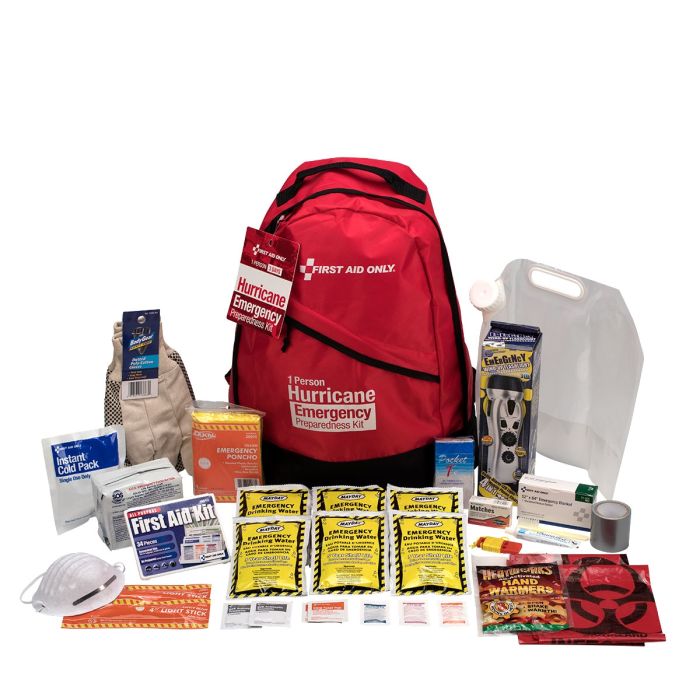Crucial Emergency Readiness Tips for Survival
In today's unforeseeable world, being gotten ready for emergency situations is not just a suggestion yet an important necessity. Ensuring your safety and that of your enjoyed ones throughout unforeseen crises requires mindful planning and foresight. From assembling a well-equipped emergency situation set to establishing clear communication channels and discharge paths, there are a number of crucial actions that can make a considerable difference despite misfortune. By proactively dealing with these vital elements of emergency readiness, you can considerably boost your possibilities of survival in challenging scenarios.
Building an Emergency Package

Begin by including non-perishable food products like canned products, granola bars, and dried fruits that have a long shelf life and do not need cooking. Keep in mind to pack a manual can opener. Additionally, store at least one gallon of water per person per day for a minimum of 3 days in tough containers.
Standard initial help products are vital. Consist of products such as sticky bandages, antiseptic wipes, discomfort reducers, and any type of needed prescription medicines. A flashlight with extra batteries, a multi-tool, and a whistle should additionally remain in your set. Keep duplicates of crucial papers like identification documents, insurance coverage policies, and emergency situation call info in a waterproof container. By assembling a well-balanced emergency package, you can much better prepare yourself for unanticipated events and increase your opportunities of staying secure during a crisis.
Developing an Interaction Strategy
Setting up an emergency situation set with crucial materials establishes a solid foundation for readiness; now, turning to the growth of a communication plan is vital for guaranteeing efficient control and information dissemination throughout times of situation. A well-thought-out communication strategy is important for maintaining individuals notified, attached, and secure in emergency situations. Begin by developing a chain of interaction that includes relative, next-door neighbors, and pertinent authorities. Make certain that everyone knows exactly how to get to each various other and mark an out-of-town contact as a central point for information sharing. Utilize several interaction approaches such as sms message, phone telephone calls, social media, and emergency alert systems to guarantee info reaches everybody immediately. Exercise your interaction strategy frequently to make certain everyone understands their duties and duties. In addition, consider elements like language barriers, access demands, and technical restrictions when establishing your interaction technique. A reliable communication strategy can make a considerable difference in managing emergencies successfully and securing the wellness of all involved.

Establishing Discharge Routes
To make sure effective emergency feedback and precaution, developing clear evacuation paths is paramount in preparedness planning. Discharge courses ought to be determined and connected to all people in a given area to make sure a swift and arranged evacuation in times of crisis. When establishing emptying courses, it is essential to think about several alternatives to account for different situations, such as fires, floodings, or various other emergency situations that might block primary escape routes.
The selected emptying paths must bring about marked secure areas where individuals can seek shelter and await more instructions or assistance (click for source). These courses ought to be conveniently available and well-marked, considering the requirements of all individuals, consisting of those with specials needs or mobility limitations. Normal drills and practice runs along these emptying routes can assist acquaint individuals with the escape paths and make certain a more effective discharge procedure during actual emergency situations
Along with physical evacuation routes, it is vital to have different communication techniques in location to relay discharge instructions and updates efficiently. By establishing and regularly assessing evacuation routes, communities can improve their general emergency situation readiness and action capacities.
Understanding Basic First Aid
One basic facet of emergency situation preparedness is getting expertise in basic very first aid procedures. In times of situation or calamity, having the ability to offer instant medical help can make a substantial difference in conserving lives. Knowing fundamental emergency treatment outfits individuals with the skills to respond and examine to medical emergencies and common injuries properly.
Standard initial aid training generally covers essential strategies such as CPR, injury treatment, bandaging, splinting, and recognizing indicators of shock or breathing distress. Check Out Your URL. Comprehending just how to provide these fundamental interventions properly can stabilize a person's problem till specialist medical assistance shows up
Moreover, having a standard initial aid set easily available is important in emergency situations. The kit ought to consist of essential supplies like bandages, antiseptic wipes, gauze pads, adhesive tape, tweezers, scissors, and gloves. Knowing just how to use these items effectively can protect against infections, stop bleeding, and give convenience to those in requirement.
Safeguarding Crucial Files

Final Thought
Developing an emergency situation kit, establishing an interaction plan, establishing emptying courses, learning fundamental initial aid, and securing crucial records are important actions to take. It is vital to focus on emergency preparedness to make sure preparedness for any kind of potential crises that may develop.
From constructing a well-equipped emergency set to developing clear interaction networks and discharge routes, there are several important actions that can make a considerable distinction in the face of difficulty.To make sure efficient emergency situation action and safety and security measures, establishing clear discharge routes is vital in readiness preparation. When developing emptying paths, it is necessary to take into consideration numerous alternatives to account for various situations, such as fires, floodings, or other emergencies that may block primary retreat courses.
Normal drills and method runs along these emptying paths can help familiarize individuals with the retreat courses and guarantee an extra effective emptying process during real emergency situations.
Developing an emergency situation kit, creating an interaction plan, establishing discharge paths, discovering basic first help, and protecting vital records are crucial actions to take.